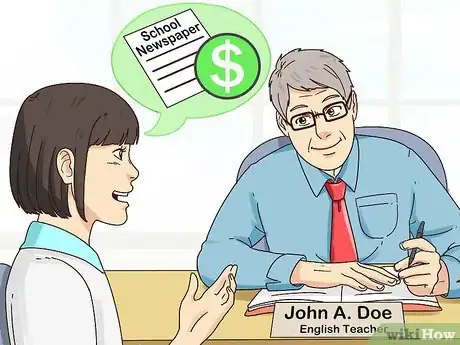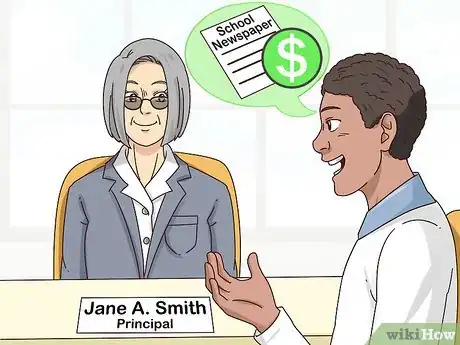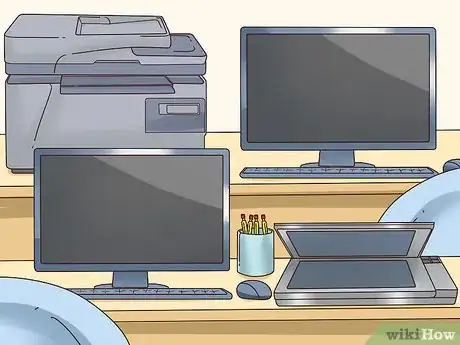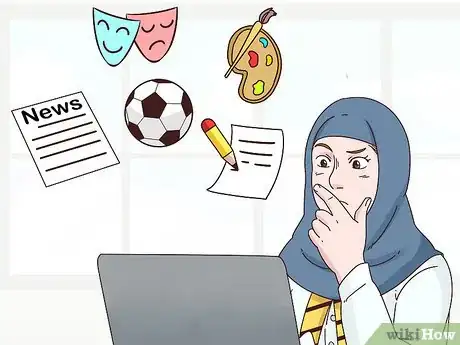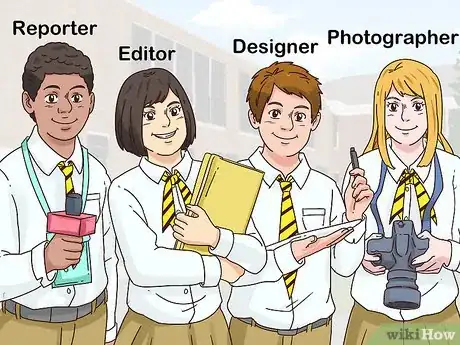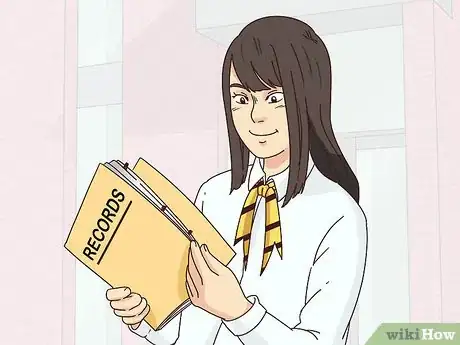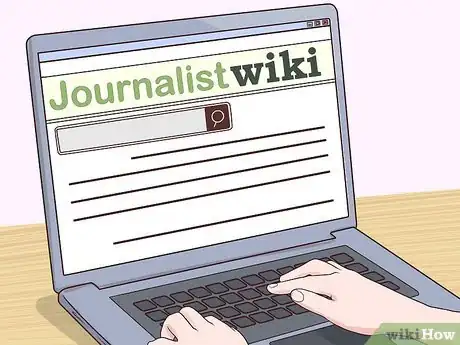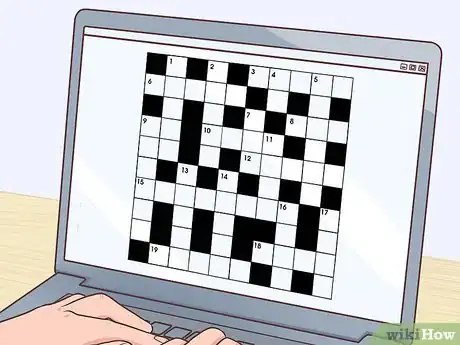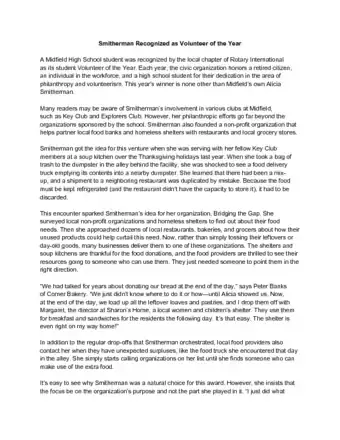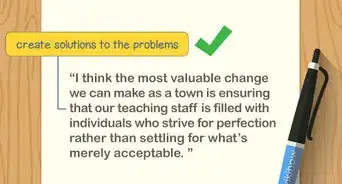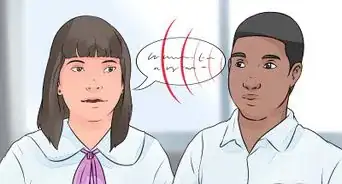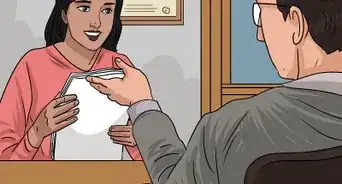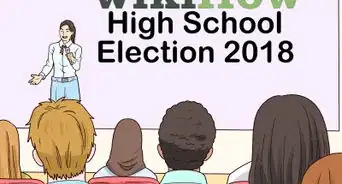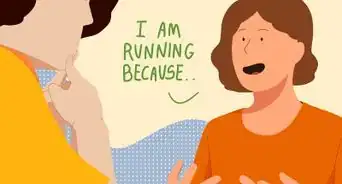This article was co-authored by Alicia Oglesby. Alicia Oglesby is a Professional School Counselor and the Director of School and College Counseling at Bishop McNamara High School outside of Washington DC. With over ten years of experience in counseling, Alicia specializes in academic advising, social-emotional skills, and career counseling. Alicia holds a BS in Psychology from Howard University and a Master’s in Clinical Counseling and Applied Psychology from Chestnut Hill College. She also studied Race and Mental Health at Virginia Tech. Alicia holds Professional School Counseling Certifications in both Washington DC and Pennsylvania. She has created a college counseling program in its entirety and developed five programs focused on application workshops, parent information workshops, essay writing collaborative, peer-reviewed application activities, and financial aid literacy events.
There are 7 references cited in this article, which can be found at the bottom of the page.
This article has been viewed 136,157 times.
Starting a school newspaper can be a great learning experience. You get to hunt down stories and write about what is going on around you. Plus, it shows you have initiative and drive. Starting a paper will be hard work, though, so be prepared to give as much time and effort as you can, especially when you're first starting out. You'll need to get school support, then decide how you want your newspaper to be set up. Once you've got that figured out, you can get down to business writing articles.
Steps
Gaining Support for the Paper
-
1Find a sponsor. You'll most likely have the easiest time starting a newspaper if you can find a teacher who will sponsor the paper. Ask one of your favorite teachers if they'll help run it. An English teacher is a great choice. A teacher who works on the yearbook may also be willing to help.[1]
- You could say, "I'm really interested in journalism, and I've noticed we don't have a school newspaper. I'd like to start one. Would you consider being the sponsor?"
- In some schools, you may be required to have a sponsor to start something like a newspaper.
-
2Approach the authorities. If you can't find a sponsor, go to the top. That is, ask to speak with the principal or head of the school. They'll likely be able to help you find the sponsor if you convince them you're committed to the idea.
- Even if you do find a sponsor, you'll still likely need to go talk to the head of the school, but your sponsor should come with you.
- Set up a formal appointment with the principal or vice principal by talking with the administrative office.
- You could say, "I have a strong interest in journalism, and I'd like to start a school paper. How do I get started?"
Advertisement -
3Find interested students. You can make your case stronger if you find other people who are interested in working on the newspaper. Ask around to see if anyone would want to write or edit for the paper. You should also find people who may be interested in taking photos or doing layout.[2]
- Don't just ask your friends. You want diversity on your staff. Ask people from different groups, organizations, and cliques, so your paper will represent your school better.
-
4Figure out money. Most papers take at least some money, though you can do one fairly cheaply if you stick to an electronic paper. However, if you want a print edition, you'll need to find money somewhere.[3]
- You may be able to gain revenue for the newspaper by selling ads to local retailers. Set aside certain sections of the paper, then determine how much you want to sell ads for. Approach or call local businesses to see if they'd be willing to pay to advertise.
- You can also ask the school for money, but budgets are often tight. If that doesn't work, consider approaching the PTA/PTO. They might hold a fundraiser for you. Alternatively, you could run your own fundraiser, such as a bake sale or car wash.
-
5Pick a location with some key supplies. You'll need some basic resources when starting a newspaper. Specifically, you'll need a room to work in, some computers, and ideally a scanner. A printer and pens are also helpful for the editing process.[4]
Establishing the Basics
-
1Choose an audience. The audience is just who reads your paper. Maybe your audience is the whole student body or the student body and faculty. However, maybe you want a newspaper just for band members or for a club you're in. Choosing an audience is important because it helps you focus your paper.
- Your audience also helps you determine your format. If you just have a small audience, you probably want an easy electronic format, such as a blog.
-
2Pick a format. Traditionally, newspapers are print-driven. However, to be in print, you must have some resources, such as access to a copier or a local print shop who will print it for free. If you don't have those resources, you can start out as a solely electronic newspaper, delivered through the school.[5]
- You could also create a newspaper distributed through a blog service, such as Blogger or WordPress. An electronic newspaper is a great way to save money. Plus, you can easily update it as much as you want. Also, you don't have to waste time running to the printers or printing the paper off yourself.
- To promote your electronic paper, consider printing out promotional fliers. You can have a web address, or you could even use a QR code so students could access it.
-
3Decide on sections. Most newspapers are divided into distinct sections. Some common sections include news, features, entertainment, sports, arts, and editorial. Think about what's most important at your school, and use that to establish major sections.[6]
- For instance, maybe your school has a heavy focus on academics and the arts. You could have sections such as news, features, arts, and editorials.
- If you're going for a print paper, keep in mind that the longer your paper is, the more expensive it's going to be.
- You may want to include a section with little snippets of news, an area where you can write anecdotal tidbits that don't warrant a full article.
- You can always start smaller. You can always work up to a bigger newspaper later. In fact, you can just stick to one section to begin with, such as news.
-
4Figure out a publication schedule. When you're first starting out, you probably don't want to publish too often. You may want to start out with just four times a year in the beginning, as you don't want to bite off more than you can chew. If you're running a purely electronic newspaper, you may just want to publish articles as people finish them on a more regular schedule.[7]
- Eventually, you may want to move to once or twice a month.
-
5Hand out the jobs. Once you've got your staff gathered, you need to figure out who's going to do what. You'll need reporters, editors, design staff, and photographers, to name a few, though you may need people doing more than one job. When it comes to reporters, try assigning people to different areas.[8]
- For instance, one person could cover sports, while another covers entertainment.
- Often, the faculty sponsor will act as one of the editors. Also, the teacher will likely be the one to hand out the jobs.
Getting the First Issue Out
-
1Hunt down stories. Now comes the fun part. You and your fellow writers need to find stories to fill those pages! You can write about everything from a teacher's recent marriage and the choir going to state competition to new music coming out and the latest movie. You definitely want to focus on your school, but everything you write doesn't need to be exclusively about your school.
-
2Talk to people. To write stories about your school, you need to do interviews. If you're doing a feature on a teacher, you should ask them if you can do an interview. It might also be good to talk to people close to them. Make sure you take good notes. You may even want to record your interviews.
- You can even use your smartphone to record interviews. Just remember to always get consent from the person before you record them.
- If you're writing an article about the school, get other students' opinions. Talk to as many people as you can to get quotes. Try asking around at lunch or after school.
-
3Do some digging. Even if you've interviewed people, you might still need to do some digging. For instance, you may want to know when a particular tournament was first held. You might need to dig through school records to find out more. Research takes time and effort, but it makes for better stories.[9]
-
4Write your stories. Start by figuring out what's most important in your story. Look at who, what, when, where, why, and how, and decide which of those should come first. You'll need to cover all of these bases in your article, but certain parts should be given preference, depending on what's most important to the story.[10]
- Your first paragraph is called the lead. It should give readers the basic information, including what you decided was most important.
- Once you've established the major facts, you can provide supporting details in the following paragraphs.[11]
-
5Use active voice and active verbs. Active voice is when the subject of the sentence is doing the action. Active verbs are also important. Active verbs are ones that actually show action, such as "jump," "shout," and "cried," as opposed to being verbs, such as "are" and "is."[12]
- For instance, "There are many reasons that she ate pie," is in passive voice. To switch to active voice, find the subject who's doing the action, "she" in this case, and switch the sentence around: "She ate pie for many reasons." Also, the main verb in the sentence is now an action verb instead of a being verb.
-
6Get photos with captions. Your major stories will have more impact if you can get a relevant photo. You can use either candid or staged shots. Pick whatever works best for the article, though candid shots can show more action. Don't forget to add captions for each photo, so the reader knows what it's about.
-
7Focus on the front page. The front page is what grabs people's attention. You want to have something relevant there. Pick something that's important to put there. You can also add stories that focus on recent or upcoming events, which most people are interested in.
-
8Edit your stories. Once your stories are written up, they need to be edited. When editing, you want to look for things like grammar mistakes, of course. However, you also want to check that the story has good flow, the writing isn't too flowery or long (shorter sentences are usually better in journalism), and that the content makes sense.
- Look for a good lead upfront that lets the reader know what's going on. Also, make sure the writer follows up with clear details.[13]
- Try letting a student edit them first, and then run them by your faculty sponsor.
- Don't forget to add a snazzy headline.
-
9Hand the articles to layout. Next, the newspaper needs to be laid out, meaning it needs to be put together into a cohesive whole. It can be a bit like a puzzle, making sure everything fits right. Sometimes you have to "jump" stories, meaning you need to continue them on another page. Also, don't forget to label the major sections, number the pages, add captions to photos, and put in headlines for articles.[14]
-
10Print and distribute the paper. Once everything is edited and laid out, it's time to sent it to print. If you're distributing it electronically, that may just mean changing it to a better file format, such as converting it to a blog post for Blogger or even just a PDF. If you're printing it, print it out on your school's copy machine, and fold it up. Alternatively, send the file to the local printer. Once it's done, distribute it around the school.[15]
- For print editions, you may want to have stacks of newspapers all around the school that kids can pick up.
Making Your Newspaper Better
-
1Find resources to learn about journalism. No one is a born journalist, and you have much to learn about writing and working for a paper. Read up on journalism on websites for students. Spend some time at your local library finding out more through books, or ask the school to provide you with a few resources if your school library doesn't already have some.
- You should also be reading other papers. Try reading your local paper, for instance. Reading newspapers helps you learn the journalistic style.
-
2Follow Associated Press (AP) style. Most newspapers use AP style to write their articles. A style guide just tells you how to do certain things, such as write numbers and make abbreviations. AP style focuses on making things short and sweet since most newspapers don't have much space. You can use a site like https://owl.english.purdue.edu/owl/resource/735/02/ to learn the basics, but you may also want to get your hands on a copy of the stylebook, The Associated Press Stylebook.[16]
-
3Work on appeal. Of course, not every article is going to appeal to everyone. But you should work on producing a paper that appeals to a wide selection of the student body. You want to write on things that interest people, without getting too gossipy or too academic.[17]
- The goal of your paper should be to help build a community at your school. Be as inclusive as you can.
-
4Add fun stuff. As you continue to develop your newspaper, you can add fun things, such as games, crosswords, or comics. You can even write your own puzzles, related to your school. For instance, word searches are fairly easy to put together.[18]
-
5Keep your opinion out of the news. While a newspaper does have sections where your opinion is appropriate, such as the editorial page or the reviews section, you shouldn't insert your opinion in the features or news sections. They need to be unbiased, which means you don't slant it either way. You just present the facts.
Sample Articles
Expert Q&A
-
QuestionWhat qualities do I need to successfully start a school newspaper?
 Alicia OglesbyAlicia Oglesby is a Professional School Counselor and the Director of School and College Counseling at Bishop McNamara High School outside of Washington DC. With over ten years of experience in counseling, Alicia specializes in academic advising, social-emotional skills, and career counseling. Alicia holds a BS in Psychology from Howard University and a Master’s in Clinical Counseling and Applied Psychology from Chestnut Hill College. She also studied Race and Mental Health at Virginia Tech. Alicia holds Professional School Counseling Certifications in both Washington DC and Pennsylvania. She has created a college counseling program in its entirety and developed five programs focused on application workshops, parent information workshops, essay writing collaborative, peer-reviewed application activities, and financial aid literacy events.
Alicia OglesbyAlicia Oglesby is a Professional School Counselor and the Director of School and College Counseling at Bishop McNamara High School outside of Washington DC. With over ten years of experience in counseling, Alicia specializes in academic advising, social-emotional skills, and career counseling. Alicia holds a BS in Psychology from Howard University and a Master’s in Clinical Counseling and Applied Psychology from Chestnut Hill College. She also studied Race and Mental Health at Virginia Tech. Alicia holds Professional School Counseling Certifications in both Washington DC and Pennsylvania. She has created a college counseling program in its entirety and developed five programs focused on application workshops, parent information workshops, essay writing collaborative, peer-reviewed application activities, and financial aid literacy events.
Professional School Counselor You should be a strong writer so that you can help other students who might want to join. You should also understand the different components of a newspaper. You need to be willing to reach out to other students, and you also need to be comfortable working with adults. Make sure you're able to share ideas in an organized, concrete way.
You should be a strong writer so that you can help other students who might want to join. You should also understand the different components of a newspaper. You need to be willing to reach out to other students, and you also need to be comfortable working with adults. Make sure you're able to share ideas in an organized, concrete way. -
QuestionWhat if you have a small group, and you can't get anyone else to help you out?
 Community AnswerKeep your paper smaller. Fewer stories means less work overall. You can even do just a one-page paper.
Community AnswerKeep your paper smaller. Fewer stories means less work overall. You can even do just a one-page paper. -
QuestionWhat is legal sized paper?
 Community AnswerIt's just a standard size of paper. It's 8 1/2 inches wide by 14 inches long. It's longer than a standard sheet, which is 11 inches long.
Community AnswerIt's just a standard size of paper. It's 8 1/2 inches wide by 14 inches long. It's longer than a standard sheet, which is 11 inches long.
References
- ↑ https://aspa.ua.edu/wp-content/uploads/2010/02/How-to-start-a-school-newspaper-2014.pdf
- ↑ https://aspa.ua.edu/wp-content/uploads/2010/02/How-to-start-a-school-newspaper-2014.pdf
- ↑ https://www.americanpressinstitute.org/wp-content/uploads/2013/09/Press-Ahead-A-Teacher%E2%80%99s-Guide-to-Creating-Student-Newspapers.pdf
- ↑ https://aspa.ua.edu/wp-content/uploads/2010/02/How-to-start-a-school-newspaper-2014.pdf
- ↑ https://www.americanpressinstitute.org/wp-content/uploads/2013/09/Press-Ahead-A-Teacher%E2%80%99s-Guide-to-Creating-Student-Newspapers.pdf
- ↑ https://www.americanpressinstitute.org/wp-content/uploads/2013/09/Press-Ahead-A-Teacher%E2%80%99s-Guide-to-Creating-Student-Newspapers.pdf
- ↑ https://aspa.ua.edu/wp-content/uploads/2010/02/How-to-start-a-school-newspaper-2014.pdf
- ↑ https://www.americanpressinstitute.org/wp-content/uploads/2013/09/Press-Ahead-A-Teacher%E2%80%99s-Guide-to-Creating-Student-Newspapers.pdf
- ↑ https://www.americanpressinstitute.org/wp-content/uploads/2013/09/Press-Ahead-A-Teacher%E2%80%99s-Guide-to-Creating-Student-Newspapers.pdf
- ↑ https://owl.english.purdue.edu/owl/resource/735/05/
- ↑ https://owl.english.purdue.edu/owl/resource/735/04/
- ↑ https://owl.english.purdue.edu/owl/resource/735/05/
- ↑ https://owl.english.purdue.edu/owl/resource/735/05/
- ↑ https://www.americanpressinstitute.org/wp-content/uploads/2013/09/Press-Ahead-A-Teacher%E2%80%99s-Guide-to-Creating-Student-Newspapers.pdf
- ↑ https://www.americanpressinstitute.org/wp-content/uploads/2013/09/Press-Ahead-A-Teacher%E2%80%99s-Guide-to-Creating-Student-Newspapers.pdf
- ↑ https://owl.english.purdue.edu/owl/resource/735/02/
- ↑ https://www.theguardian.com/teacher-network/teacher-blog/2013/jan/02/setting-up-student-newspaper
- ↑ https://www.americanpressinstitute.org/wp-content/uploads/2013/09/Press-Ahead-A-Teacher%E2%80%99s-Guide-to-Creating-Student-Newspapers.pdf
